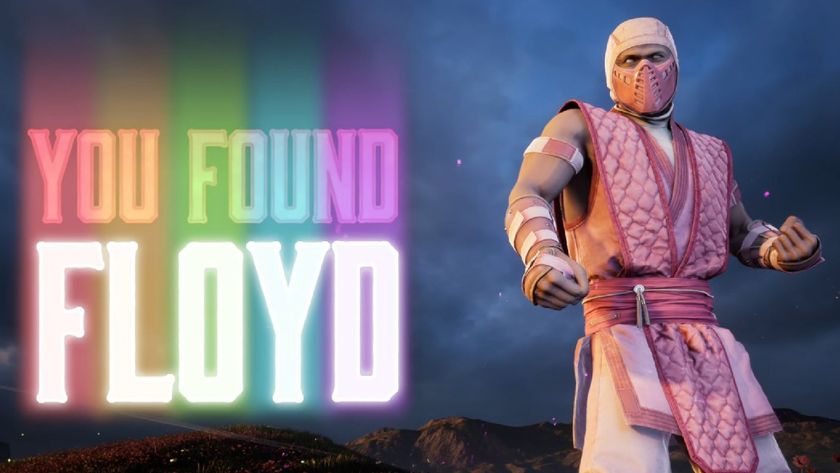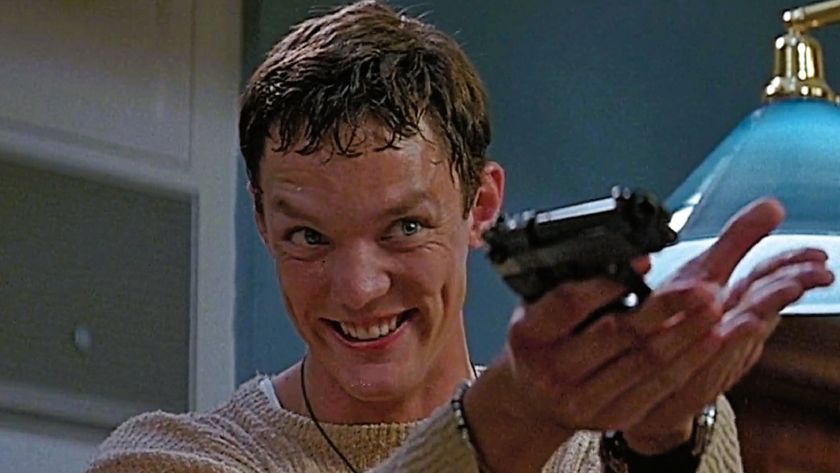7 ways you didn't realise the 1995 Mortal Kombat movie is the most stunningly accurate video game adaptation ever made
Turns out it was secretly a work of genius all along
I watched the 1995 Mortal Kombat movie for the first time in years the other night. Don't ask me why. But I'm glad I did. Because the experience blew my mind. You see, looking at it with an adult mind, I realised that the Mortal Kombat movie is perfect, on levels most of us had never before realised. Far from the simple bit of '90s shlock you might think, it's actually the most accurate, intensively-researched, intelligent, well-observed, and even philosophically deep cinematic adaptation of any video game ever.
Frankly, we're through the looking glass, down the rabbit hole, and staring the architect of The Matrix right in the face with this one, and I feel compelled to share it all with you. But don't worry, I'll ease you in with the simple stuff.
It's enjoyably silly, shallow, cheesy fun
Most obvious things first. Tonally, the MK movie has it nailed. Obviously it looks the part, having an aesthetic absolutely locked down between the looks of the first two Mortal Kombat games, but in terms of personality it’s even more accurate. The reason? While on the surface of it, the Mortal Kombat games’ reputation is one of grime, granite and guts, in truth they’re actually a big camp load of old silliness; a rip-roaring gory pantomime of past game and movie influences run through a meat grinder and repackaged with (mostly) knowing flair. And while in gameplay terms they certainly have improved over recent years, compared to the Street Fighters and Blazblues of the world they've always been slightly shallow and a bit sketchy.
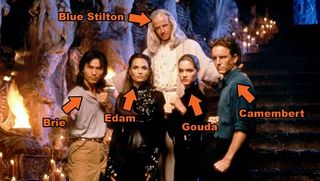
And the film is the same. Yes, it uses mugging bad guys, hammy acting and post-fight one-liners instead of melodramatically doomy sound design and creatively slapstick uses for recently removed limbs, but the end result of both works is the same. Silly, slightly tacky, guilty-pleasure martial arts nonsense made of a grab-bag of previous influences. Enter the Dragon by way of Street Fighter by way of Big Trouble in Little China, dunked in the end-of-shift contents of an abattoir floor-cleaner’s mop bucket.
And there’s not a damn thing wrong with that.
But simple philosophical comparisons aside, let’s get down into the real, deep, granular detail of just why this film is such a goddamn landmark of cinematic adaptation accuracy.
It uses actors of the wrong nationalities all over the place
Always a confusing point in the Mortal Kombat games, this one. You see being ninjas, Scorpion and Sub-Zero are from East Asia. Classically, most ninjas are. And if you really want to get into the swirling vortex of extravagant contrivance that is the Mortal Kombat narrative canon, you’ll find that Scorps is officially Japanese while Sub-Zero is categorically Chinese (albeit possibly with mixed-race DNA due to a possible American mother. Possibly) The split national origins are based on controversial (and possibly bollocks) book The Chinese Ninja Connection, which posits a Chinese precedent for the traditionally-thought Japanese art. Apparently series co-creator John Tobias was reading it at the time.
Sign up to the 12DOVE Newsletter
Weekly digests, tales from the communities you love, and more
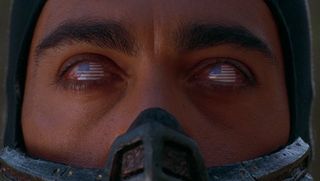
But whatever the actual origins of ninjitsu, neither Sub-Zero nor Scorpion is from Chicago. In the games however – when they were still using digitised actors anyway – both were played by Chicagoite Daniel Pesina, who also played Johnny Cage, and whose brother Carlos played Raiden. And later, even MK3's fully unmasked Sub-Zero was played by American bodybuilder, actor and personal trainer John Turk. Just as bizarrely, he also played Shang Tsung. As clear tribute to this confusing casting, the film similarly stayed western when casting its ninjas. Scorpion and Sub-Zero were played by American Chris Casamassa and Frenchman Francois Petit, respectively, ensuring 100% authenticity to the game. Oh, and Japanese thunder god Raiden? Played by another Frenchman.
Good work, Mortal Kombat movie. And that’s only the start.
It tries to render real people, but they aren't very convincing
The early Mortal Kombat games attempted to give us a realistic depiction of real, actual people really kicking each other’s real arses. They did this by digitising real actors and martial artists to create sprites and animation. Technology being what it was in 1992 though, no-one was exactly tumbling down into the uncanny valley while desperately flailing for a handhold on reality.
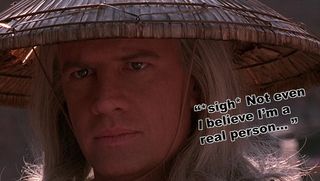
Ever eager to keep it authentic, the Mortal Kombat movie took a similar ‘almost, but not quite there’ approach to rendering its people. Although using real, made-of-meat actors by default (such being the traditional method preferred by live-action cinema) and presenting them via non-pixellated celluloid projection at a smooth 24 frames per second, the production went out of its way to make them appear as unconvincing as possible, either by hokey acting or visual design. You want evidence of this? Look at Christopher Lambert as Raiden. Just look at his hair! Just listen to his voice!
Score three for the Mortal Kombat movie’s authenticity. And we’re still barely started scratching the surface.
Most Popular




